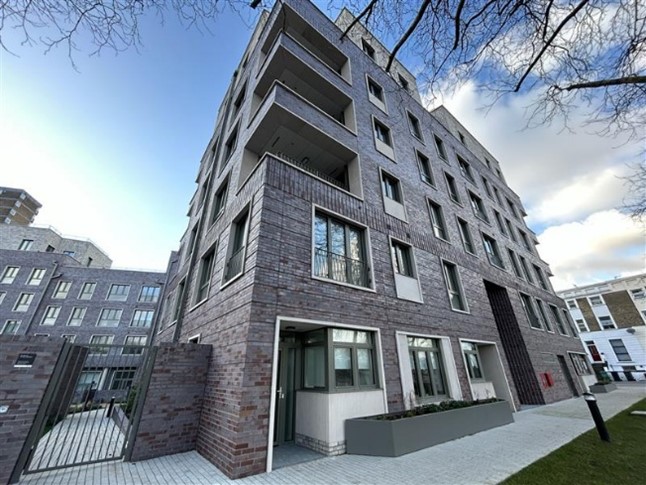Kate de Selincourt explains why the Passivhaus Trust is supporting the TCPA’s Healthy Homes Campaign
The untimely death of toddler Awaab Ishak in 2020, killed by his mould-infested home, triggered a wave of concern about the dangers of cold, damp homes. And not before time. British homes – even some of our newer ones – are notoriously cold and under-ventilated.
Widening inequality and rising fuel prices means the number of people unable to heat and air their homes adequately has been rising, not falling. The colder you are, the harder it is to tolerate cold ventilation air, even if your ventilation works properly – which too often it doesn’t.
Recent calculations by BRE indicate that the health damage to occupants in our coldest, dampest, and most dangerous homes is currently costing the NHS an estimated £1 billion per year.
Even worse, for every £1 in NHS costs, there are at least an additional £9 in societal costs: costs like long-term care, lost education and life chances, energy costs, and lost spending in the local economy. This is before you add in the loss of wellbeing and happiness and other factors falling outside BRE’s social accounting method.
Given the above, you might hope a government would do all it could to alleviate the strain on the struggling NHS – and on society as a whole. It would ensure all new homes were built in the best possible way to support health, and all retrofit programmes would put occupant health and wellbeing at the centre of their aims.
To achieve this, it could turn to the Passivhaus standard for newbuild, something that already looks set to happen in Scotland. For home retrofit, the Passivhaus retrofit approach, EnerPHit, provides a route to making existing homes healthy, comfortable and cheap to heat, while cutting carbon at the same time.
The UK now has quite a lot of experience of building and retrofitting to the Passivhaus standard, with nearly 3,000 homes already completed (the largest number by social landlords) – and over 8,500 estimated to be in the in the pipeline.
The Passivhaus standard incorporates many of the TCPA’s Healthy Homes principles as a matter of course. Passivhaus homes are carefully designed to use very little energy. This means not only are they very gentle on the planet, they are also cheap to run. And they do a lot more besides. Central to the Passivhaus standard is comfortable, effective ventilation, even surface temperatures with no cold spots to attract damp, and very high airtightness. This leads to buildings that are warm, mould-free, and remarkably quiet.
And the experience for many people moving into Passivhaus homes, especially those with poor health, has been transformational.
“My baby had patches on her lung … You could hear the raspiness in her cough, and a constantly runny nose. “She doesn’t suffer from that anymore — since we’ve been here, she doesn’t cough in the night.” – a mother who moved into a Passivhaus retrofit in London.
“I’ve reduced my medications since coming here. Even with the heating off, it feels like a holiday villa.” – a Passivhaus resident with a disability, interviewed in the Guardian newpaper.
“My daughter suffered really badly from asthma, she was using inhalers throughout the day. Since moving in she has barely had to use her inhalers at all.” – a Scottish Passivhaus resident
“Our previous flat had damp. It was depressing to be told by the landlord that it was our fault. Here we can dry clothes indoors in a day with no heating on” – a Passivhaus resident interviewed in the Guardian newspaper.
If doctors could prescribe housing, then Passivhaus is probably what they would choose (some have even said as much!).
A typical Passivhaus family home might cost one fifth as much to keep warm compared to a typical UK newbuild. The difference is enough to buy five portions of fruit and vegetables a day for four people – a cost that has to be cut by many of our poorest families at present. And if the family cannot afford to heat for a few days (a sad reality for many, unfortunately), a Passivhaus home will maintain safe temperatures for far, far longer than even a typical newbuild.
So here are tools the government could be using right now to fix the unhealthy homes crisis. But sadly, this is not what’s happening. The targets for energy efficiency in UK homes – especially, homes in England, fall way short of this. And to make matters worse, these low standards are not even achieved in practice, with homes as built typically consuming at least 60% more energy than the design intention.
Installed ventilation frequently falls short of regulatory requirements, and can also be uncomfortable, leading to occupants disabling it.
The secret sauce in Passivhaus is care. Care is taken to ensure the building is designed to conserve heat and have no cold spots, receives warm fresh air in every living space, and is protected from extremes of heat in summer too. But care is a missing ingredient in so much British construction. The ambition is low, the achievement is lower still.
The building regulations are about to be updated – so you might expect things will improve. But astonishingly, the so called “Future Homes Standard”– the new building regulations due to come into force in 2025 – has proposed accepting buildings that are *more expensive* to heat even than those being built today. (see Figure 3 in this paper)
Meanwhile, when existing cold and damp homes are being retrofitted with government money, the requirements for improvement are defined primarily on the basis of theoretical carbon savings. This may be neither effective nor helpful, if low-carbon tech is installed but occupants can barely afford any heating, and their homes are not made more efficient, healthy, and comfortable.
It is perfectly possible for retrofitting to both save carbon and enhance health – with the right approach, they go together very naturally. The Passivhaus EnerPHit retrofit standard pays equally close attention to energy use, cold spots, air tightness, and ventilation as does the newbuild standard, and shows you can do both.
We know buildings can promote, rather than damage health. So why isn’t this happening everywhere? There seems to be a disgraceful lack of policy interest – research has shown that “considerations of health are… largely absent from policy documents pertaining to the built environment”.
The TCPA is calling on people and organisations to sign up to the Healthy Homes Pledge and work to make healthy, affordable homes a reality. The Passivhaus Trust shares all these goals: the wellbeing of the occupants should be at the heart of every design: new build, or retrofit. These priorities must be properly incorporated into the planning system and building regulations.
For more information and resources on the links between good building and good health, and how Passivhaus buildings support the wellbeing of their occupants, see the background briefing paper ‘Health, Wellbeing and People Performance’ from the Passivhaus Trust.




